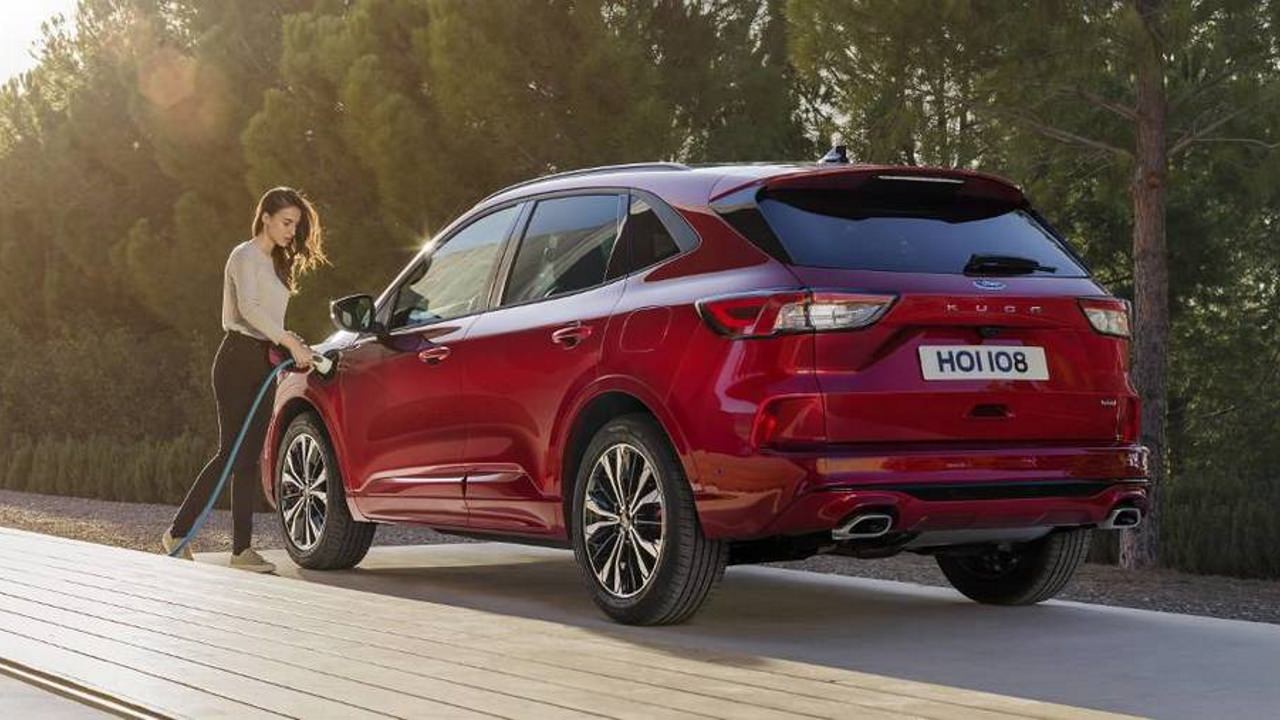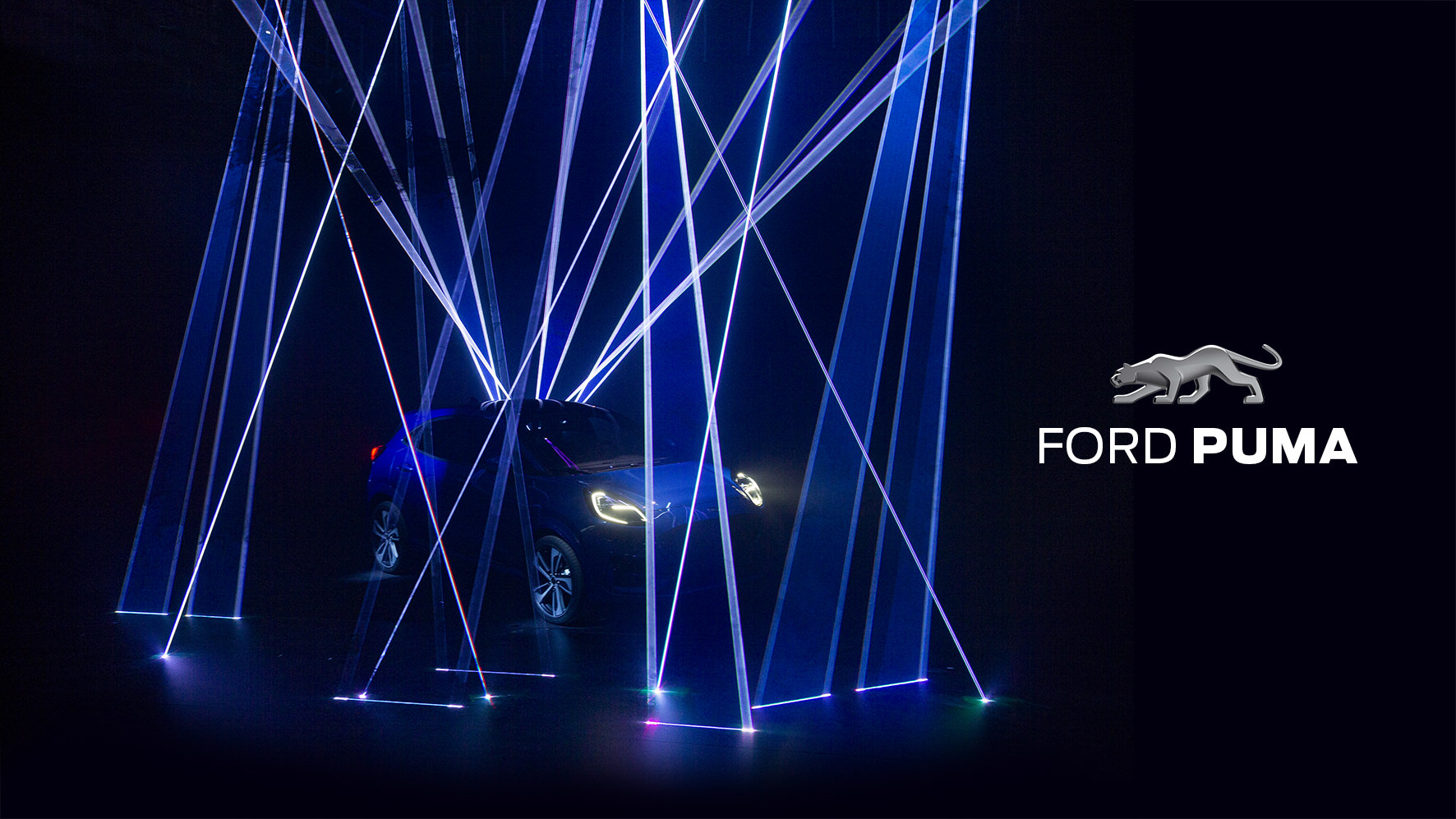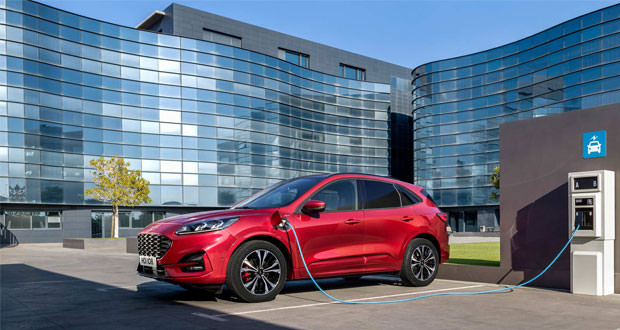Ford: Kuga drives a new range of electric vehicles
At the ” Go Electric ” event in Amsterdam, Ford illustrated his vision of electrification for the immediate future. Not only the new Kuga in three variants, but a whole range of electric vehicles ranging from the utility car to the SUV.
The ” Go Electric ” event in Amsterdam was used by Ford to introduce a full range of electric vehicles and to illustrate the vision of the Blue Oval on electrification in the near future. Meanwhile, all the new models in production will be available in hybrid variants and the new Kuga in the Mild Hybrid, Plug-in and Full Hybrid versions.
Ford has confirmed that it’s fully electric Mustang-inspired SUV will arrive in 2020 and will guarantee a range of 600 km per charge. A similar fate will be played by Transit, whose all-electric version is scheduled for 2021. The automaker has also introduced a 10-seat minibus that is part of the Transit Smart Energy concept. Using a Ford Transit chassis equipped with the same battery-powered electric drive technology as the StreetScooter WORK XL, the vehicle has a range of 150 km with a 4-hour recharge.
The concept includes six solar panels mounted on the roof and a 12-volt battery to power the seat heating system, the lighting in the cabin and the electrical systems on board. Ford is planning the first road tests by the end of the year.
Ford Kuga
The announcements on Ford Kuga are more concrete, with the three hybrid engines already mentioned. New hybrid variants will also arrive for Ford Explorer, Tourneo, Fiesta and Focus. In the case of Explorer, we are talking about a propeller capable of delivering 450 hp and a 7-seater vehicle.
Fiesta and Focus will arrive in the Mild Hybrid and Plug-in hybrid variants. In the first case the electrification is meant only with regard to the thrust in the starting phase, while in the second the engine’s ability to supply the car in exclusively electric mode for a few tens of kilometers.

Kuga is obviously the vehicle that at this stage captures the most attention, with the rechargeable hybrid version, capable of guaranteeing a 100% electric range of up to 50 km. Kuga Plug-in Hybrid combines a 2.5L Atkinson four-cylinder petrol engine: together with the electric motor, equipped with a 14.4 kWh battery, it guarantees 225 HP of power. Technical features that allow Ford to claim top-of-the-range consumption, with 1.2 L/100 km and CO2 emissions of 29 g/km.
Technology not only in propulsion, but also on board with the confirmation of the SYNC 3 infotainment system with support for Apple CarPlay and Android Auto, on 8″ tousch screen display, 12.3″ digital panel and integrated modem for FordPass Connect. Driving assistance, on the other hand, is guaranteed by the Lane Keeping System, Blid Spot Assist and Pre-collision Assist systems.
The first models of the new Ford Kuga will be available in 2019, with the Plug-in version waiting for spring 2020 instead.
Ford Puma
At the Go Futher Event Ford also unveiled the first image of Puma: a compact SUV-inspired crossover that blends an attractive design with a load capacity and flexibility of luggage and Mild-Hybrid technology with 48-volt lithium-ion batteries.
Puma will arrive in Ford showrooms at the end of 2019 and will be produced at the Craiova plant in Romania, following an investment of around 1.5 billion euros starting in 2008.

The first image of the Puma reveals important distinctive traits including the headlights placed on the upper part of the side and the athletic and captivating lines, in addition to compact crossover proportions with a greater height from the ground, for a comfortable and safe driving, and a capacity of the boot without compromise of 456 liters.
Ford EcoBoost Hybrid technology will optimize Puma’s fuel efficiency by providing engine power up to 155CV. A belt-driven starter / generator (BISG) allows the recovery and storage of energy that is usually lost during braking to charge the air-cooled 48-volt lithium-ion battery.
The BISG also acts as an engine and integrates seamlessly with the 3-cylinder EcoBoost 1.0, using the energy stored by the battery, to provide additional torque under normal driving conditions, thus reducing thermal engine activity and maximizing fuel economy. consumption.

